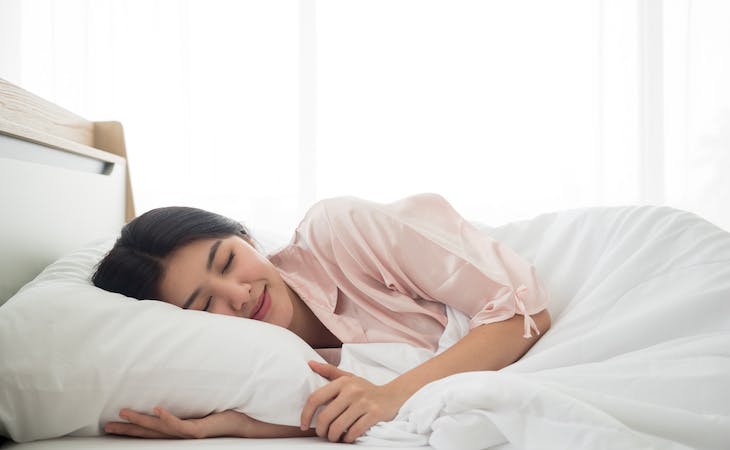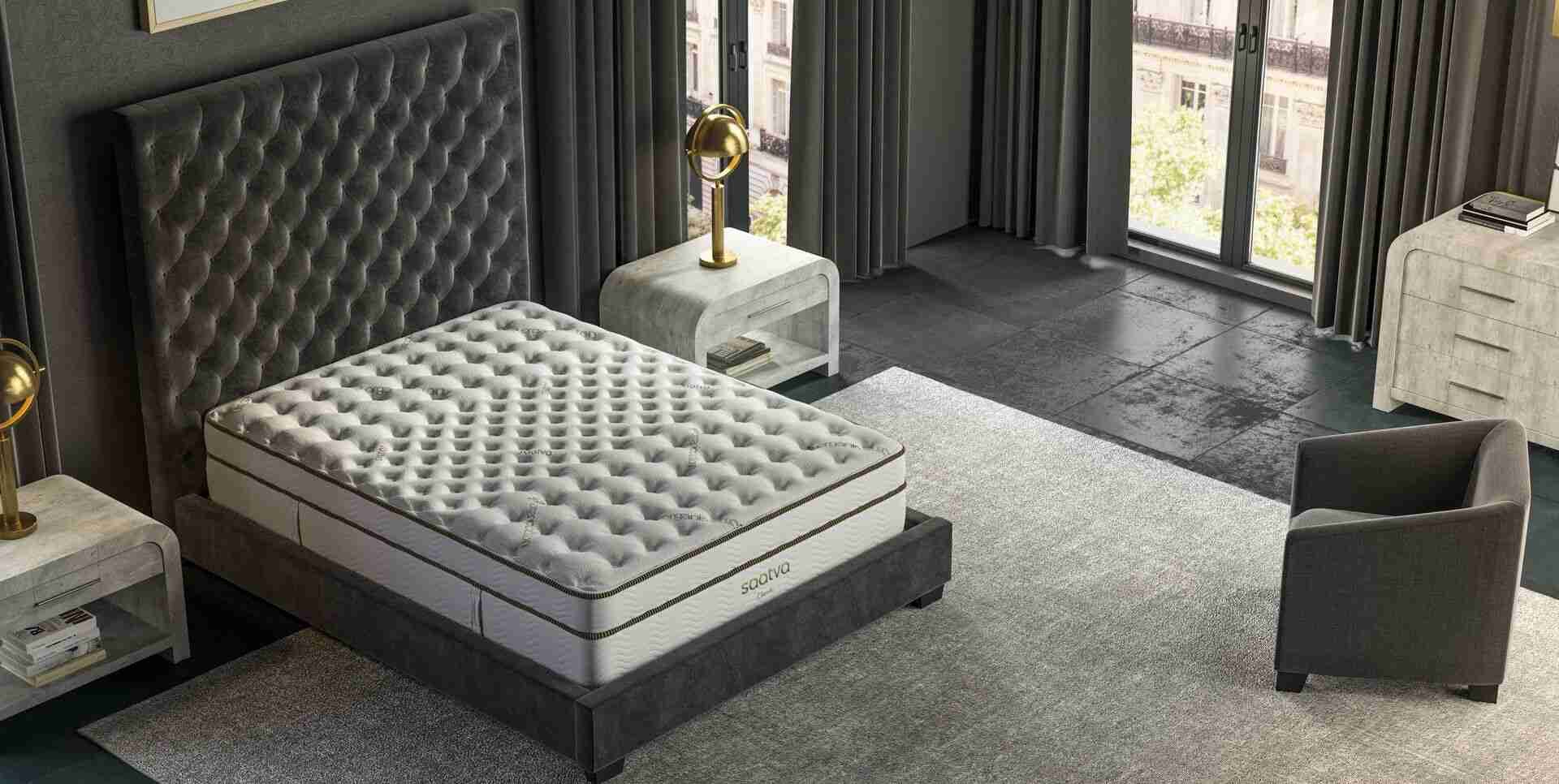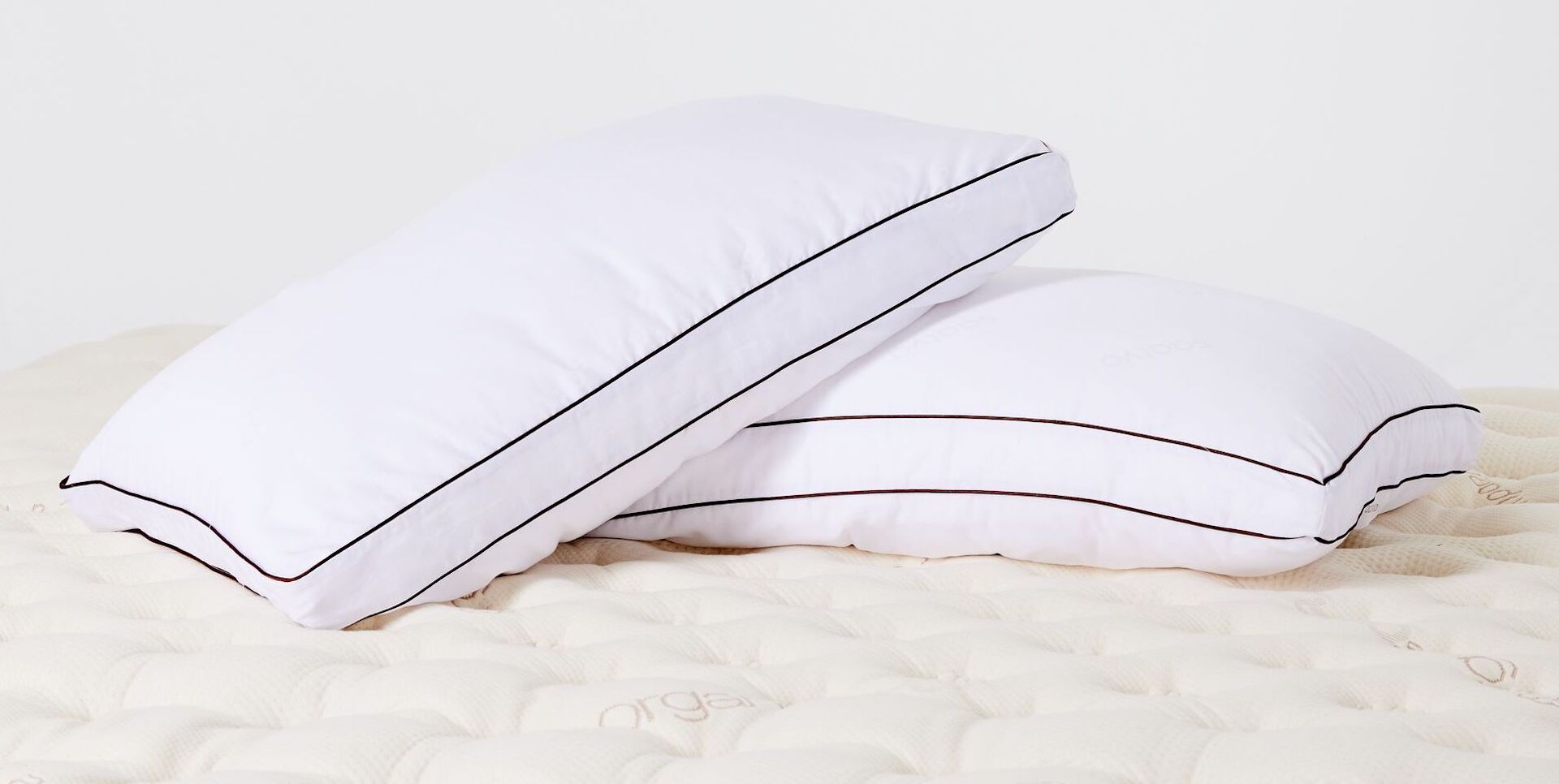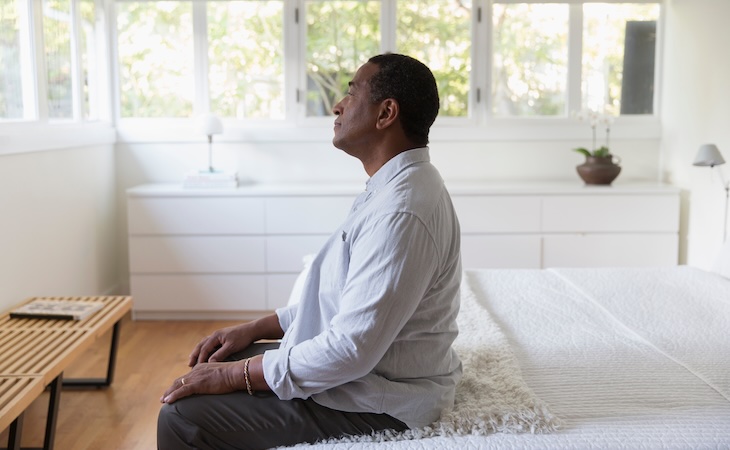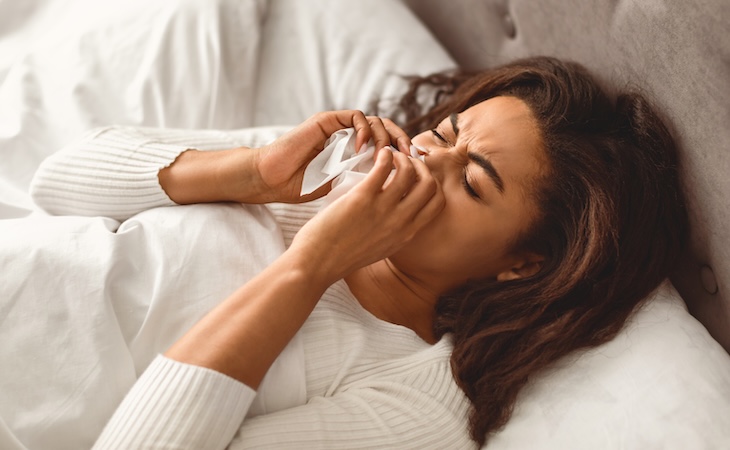While every person has their preferred sleeping position, side sleeping tends to reign as the most popular. In fact, the National Sleep Survey previously reported that 74% of us sleep on our sides.
It makes sense: “Side sleeping is a flexible position, comfortable for most people despite age and gender,” notes Carleara Weiss, PhD, RN, sleep science consultant at Aeroflow Sleep.
But like other sleep positions, side sleeping has its pros and cons. Keep reading for helpful information on how to sleep on your side (including the best side to sleep on), how to deal with side sleeper shoulder pain, and ways to improve your sleep.
What is a side sleeper?
Simply put, Weiss says a side sleeper is a person whose preferred sleeping position is on the right or the left side of their body.
Types of side sleepers
There are some common types of side sleepers, with sleeping positions that might even give away things about one’s personality.
While there’s no solid scientific evidence to support a connection between sleep positions and personality traits, Weiss says, it can be fun to learn about these positions from a “pop culture” standpoint.
Fetal position
Sleeping on your side with your knees bent and arms tucked into your chest, this preferred sleeping position denotes an “introvert and sensitive personality,” says Weiss.
Log
In the log position, you look exactly like the name implies: a “log,” with arms and legs both perfectly straight and stretched out. Looking as if you’re standing at the ready, Weiss says this position may hint at being suspicious of other people.
Yearner
When sleeping, do you look as if you’re reaching out, or “yearning,” for something? With arms and legs stretched out to the side, Weiss says if you often sleep in this position, you may be “open-minded but indecisive” and have a “complex personality.”
Pillow hugger
Do you always have to be hugging something when you sleep, whether that’s a pillow, a stuffed animal, a pet, or your partner? According to Weiss, this position simply means you’re a lovable person who enjoys close relationships.
Reacher
Fully sprawled and reaching your arms away from your body, the reacher position can mean you’re an open-minded, prudent, and cautious person, Weiss says. (Find out if left vs. right side sleeping is better for you.)
Benefits of side sleeping
There are quite a few benefits when it comes to side sleeping. Here are the top ones, according to Weiss:
- Reduced risk of snoring: This is important for those at risk of this behavior due to back sleeping and body weight.
- Reduced lower back pain: Generally, side sleepers are less likely to experience back pain.
- Healthier for pregnant people: That’s because side sleeping can improve blood circulation and reduce the risk of stillbirth. It also reduces gastroesophageal reflux (heartburn), which is common during pregnancy.
- Makes wearing a CPAP more comfortable: If using a CPAP machine, you can benefit from side sleeping for comfort while wearing one.
Drawbacks of side sleeping
With all of these side-sleeping benefits come some downsides too. According to Weiss, the drawbacks of side sleeping include:
- Neck pain (this is the number one complaint about side sleeping)
- Shoulder pain
- Waking up with a stiff neck
What’s the best side to sleep on?
As for the best side to sleep on, Weiss says this can depend on each person’s unique conditions.
“For example, pregnant people are advised to sleep on their left side to improve circulation,” she explains. “If you have obstructive sleep apnea (OSA), you can choose either the right or left side because both options of side sleeping will improve upper airway flow.” You can also be a side sleeper while wearing a CPAP mask to sleep, adds Weiss.
People with gastroesophageal reflux, meanwhile, should sleep on their left side. Experts aren’t quite sure why, but a JAMA Internal Medicine review of studies found the lower esophageal sphincter is relaxed for longer when patients lie on their right side.
Ask your doctor if sleeping on a certain side will alleviate any of your health conditions.
Best sleep tips for side sleepers
Weiss shares her best practices for side sleepers below:
- While a medium-firm mattress is ideal for side sleepers, it’s really best to pick a mattress according to your body weight.
- Use a pillow between your knees to help alleviate local pressure and keep the knees aligned.
- Pillows and mattresses with cooling technology are good options for maintaining body temperature during sleep.
- Using body pillows may be helpful for side sleepers, as it allows for comfort for the knees and arms.
Best mattress for side sleepers
“The best mattress for side sleepers should promote pressure relief in target areas such as the neck, head, and hips,” says Weiss. “In addition, the spinal support should be aligned with comfort, so medium-firm hybrid mattresses are excellent options for side sleepers.”
Watch this video for tips on choosing a mattress for side sleepers:
In a hybrid mattress, an innerspring base is topped with a comfort layer of memory foam or latex. “These materials are steady and comfy to the body curvature,” says Weiss.
Best pillow for side sleepers
Similar to the aspects you should look for in a mattress, the same applies to pillows for side sleepers.
“Pillows with memory foam and gel or latex are good options for side sleepers to maintain spine alignment during sleep and stay comfortable throughout the night,” says Weiss. “They are good options for all people (young, old, CPAP users, pregnant).”
Just remember, says Weiss: Firmness should be adjusted to body weight. “When in doubt, pick a medium-firm, washable pillow,” she suggests.
FAQs
Is being a side sleeper healthy?
“Yes, side sleeping is considered healthy and recommended for adults and older adults,” says Weiss.
What problems can side sleepers have?
The only real problems side sleepers can experience are sore necks and shoulders, especially upon waking in the morning. This can be alleviated by the right mattress and pillow, along with a body pillow that can provide additional comfort.
Shop mattresses and pillows for side sleepers at Saatva
Saatva offers a wide range of high-quality mattresses and pillows suited for side sleepers. All of our mattresses come with a 365-night home trial and lifetime warranty so you can try one out before deciding if it’s right for you.
Take our mattress quiz to find your perfect match.

